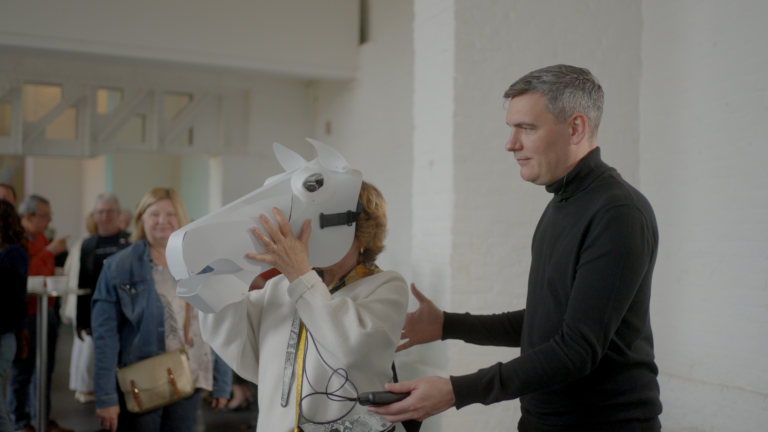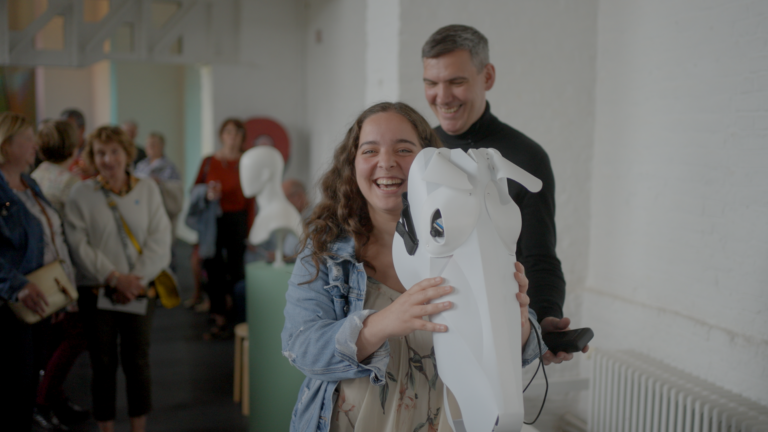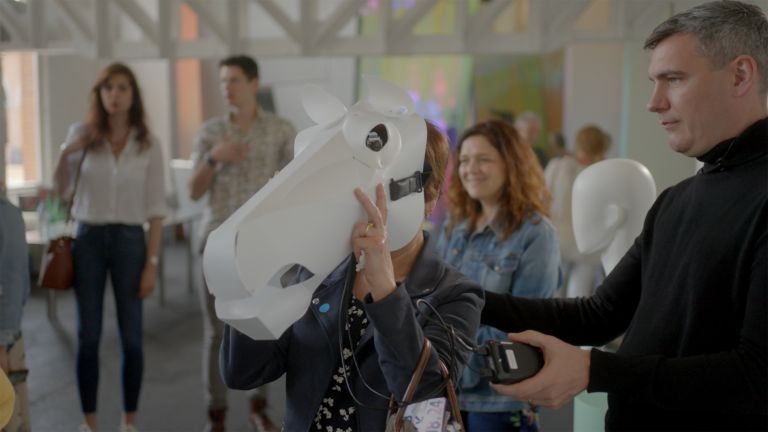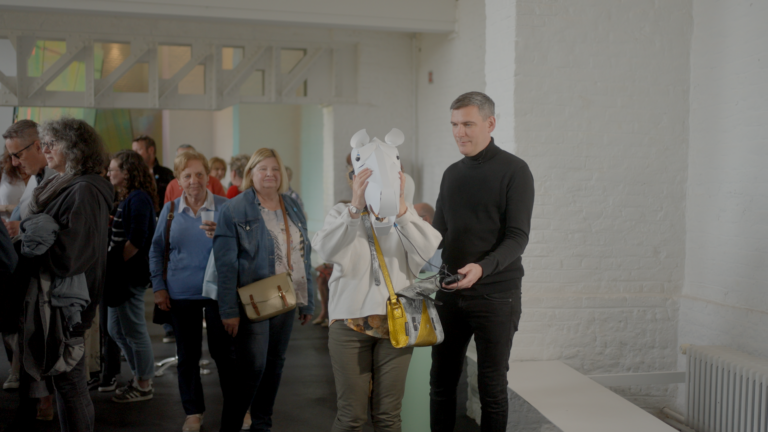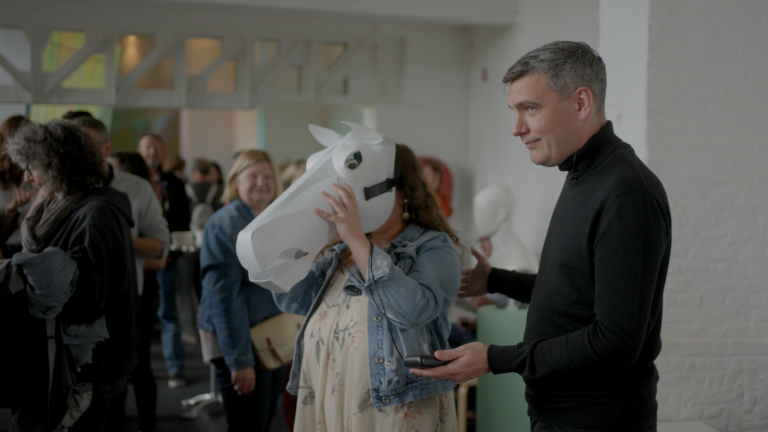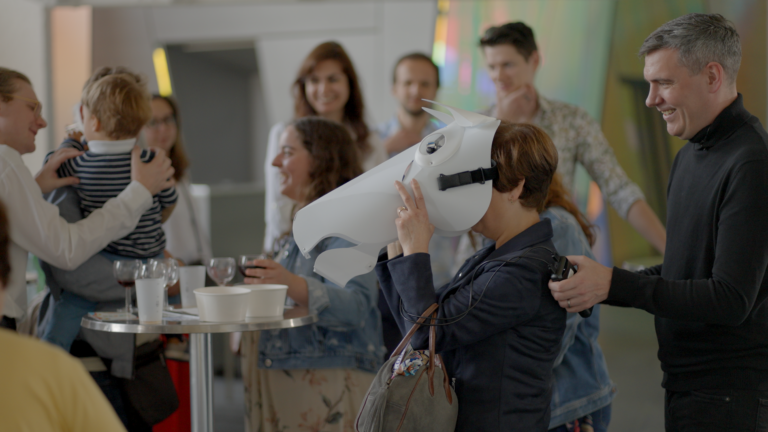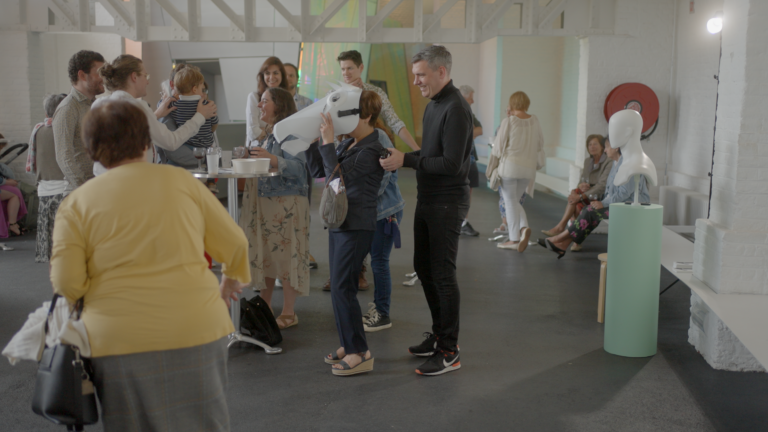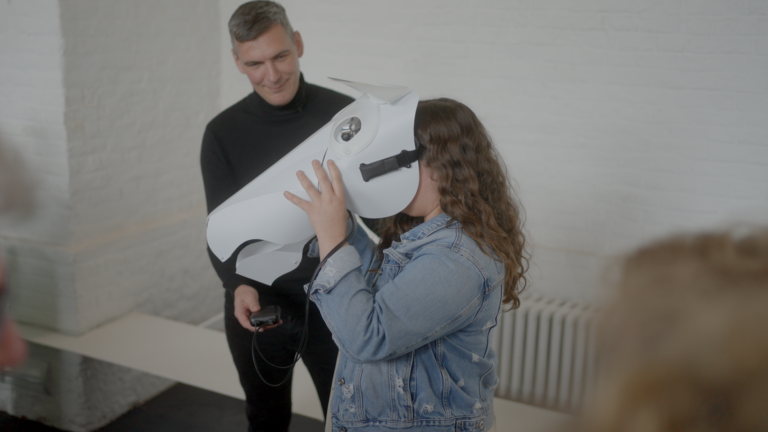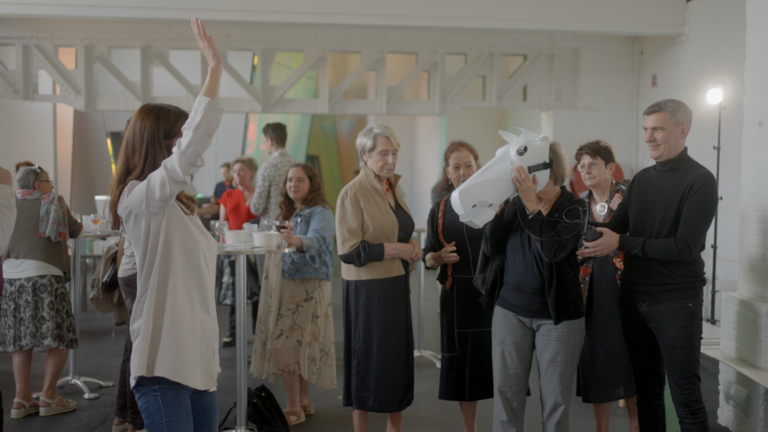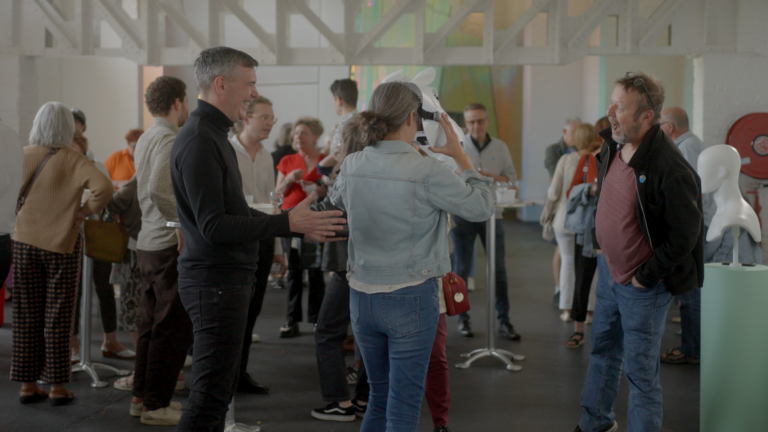Equine Eyes (2024) is an ontological tool, or, to emphasise its playfulness, an ontological toy, for imagining with. It explores how Designing and making can promote new forms of kinship, and new types of knowledge. By better understanding the horse, we can reimagine it, and our relationship to it. As a piece of Academic Carpentry, it applies Design Rhetoric to craft an experience for helping audiences become more attentive to other species, specifically horses; but in so doing, they learn to become with other species – and the world – in new ways.
By applying philosophies from Object Orientated Ontology to the making process, to build experiences which nudge towards the flatness it strives for, the project tries to craft philosophy. The project as a whole employs Feminist methods to question the ways in which we discipline and situate knowledge; what ways we construct our knowledge(s) of other species and the world. The annotated portfolio platforms situated, subjective, positioned and crafted knowledge through Research through Design as a way to trouble discipline, the way we know the world, and our relationship with other species.
The project is Designed to explore different ways of thinking, doing and being with the world. It applies tactics from Feminist Design to build a playful, immersive, ontological experiment which promotes post-humanist discourses of thinking, and rethinking other species. The device uses the ambiguous spaces opened by play to experiment with different ways of thinking, knowing and being with horses, and the wider world. The work resists positivist rational ways of knowing other species, and champions plurality, positionality, provisionality, complexity, resistance, liberation, social justice, wellbeing, equality, entanglement, and inclusion to craft a Speculative Design that is open and greedy at the edges.
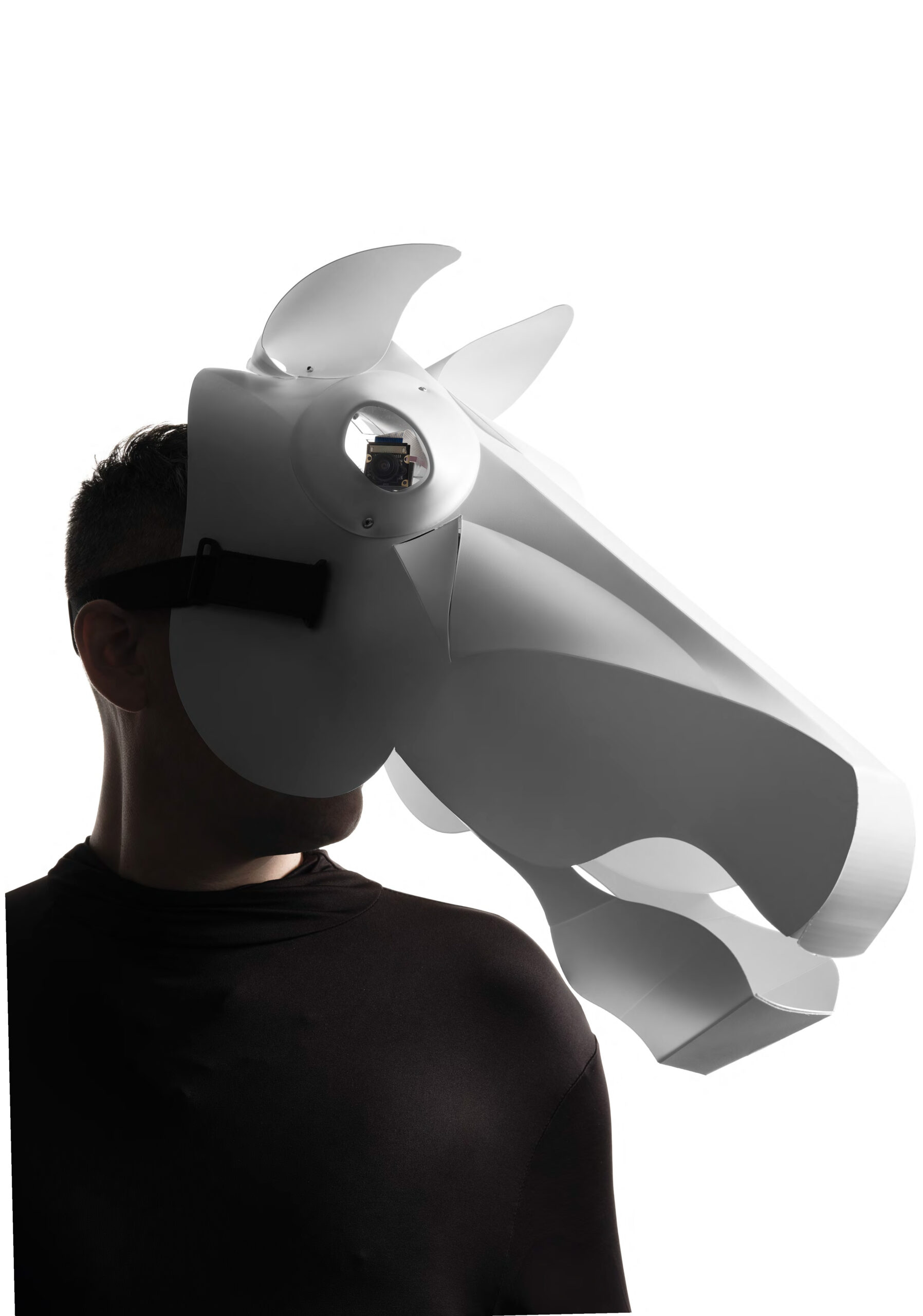
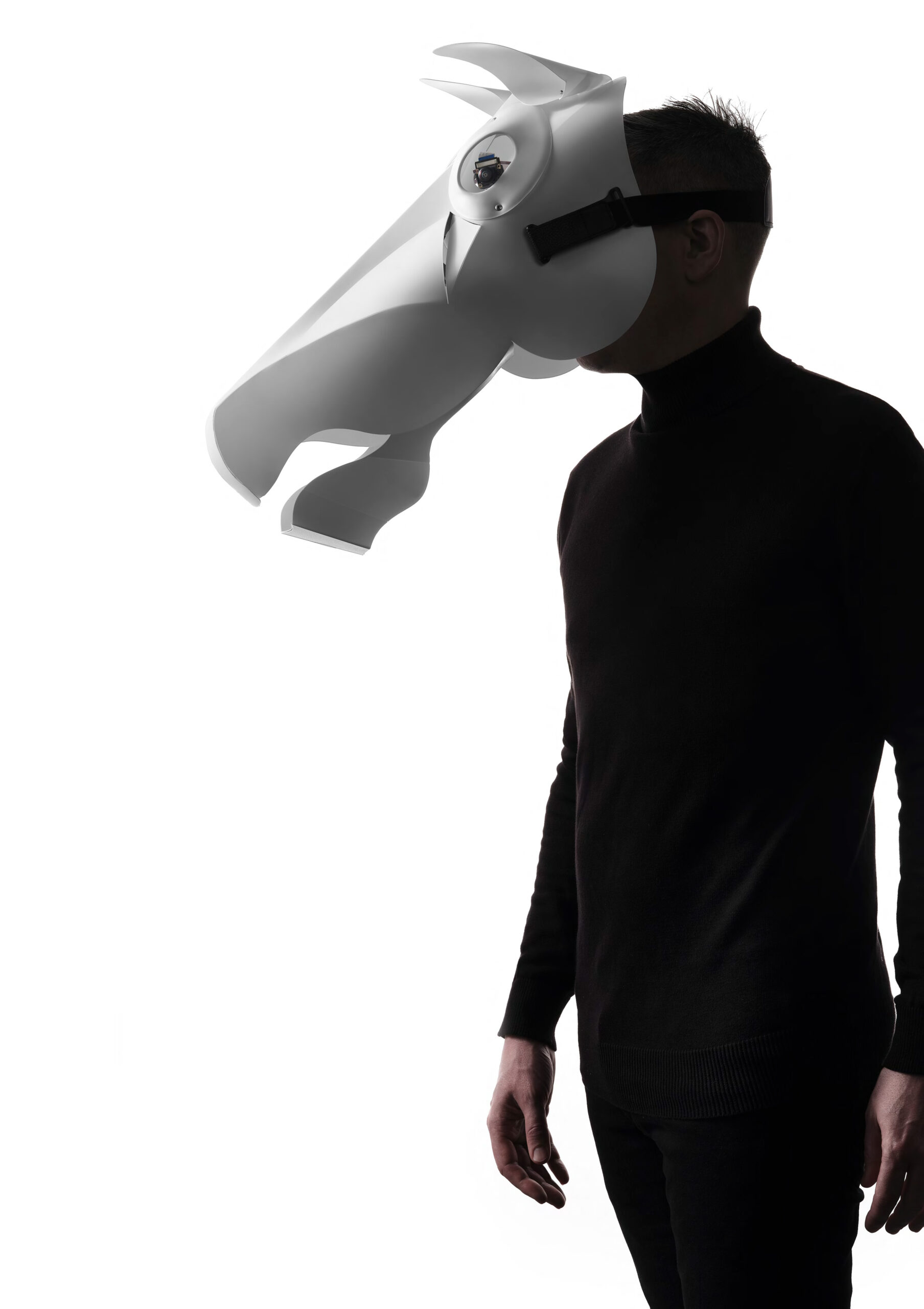
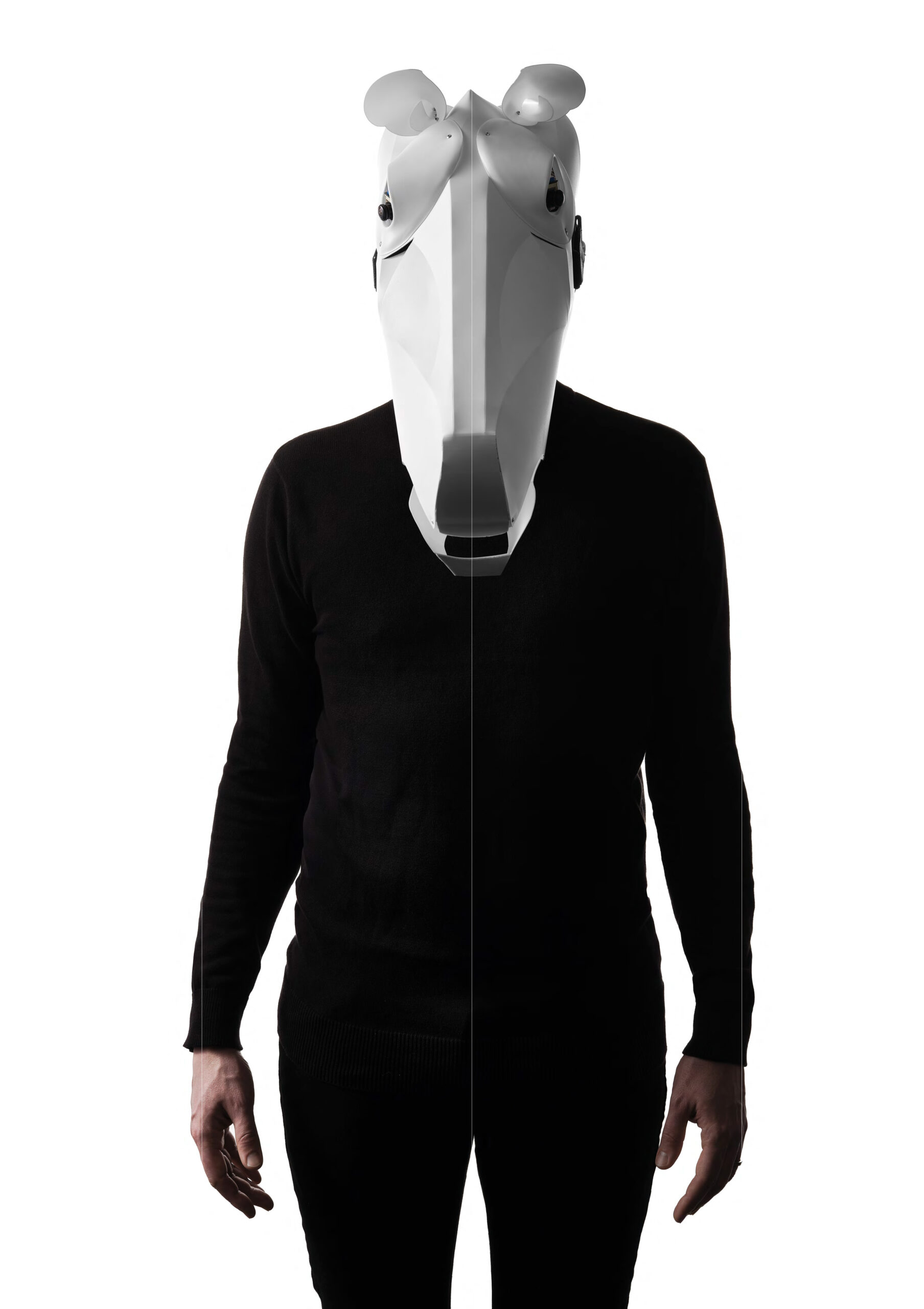
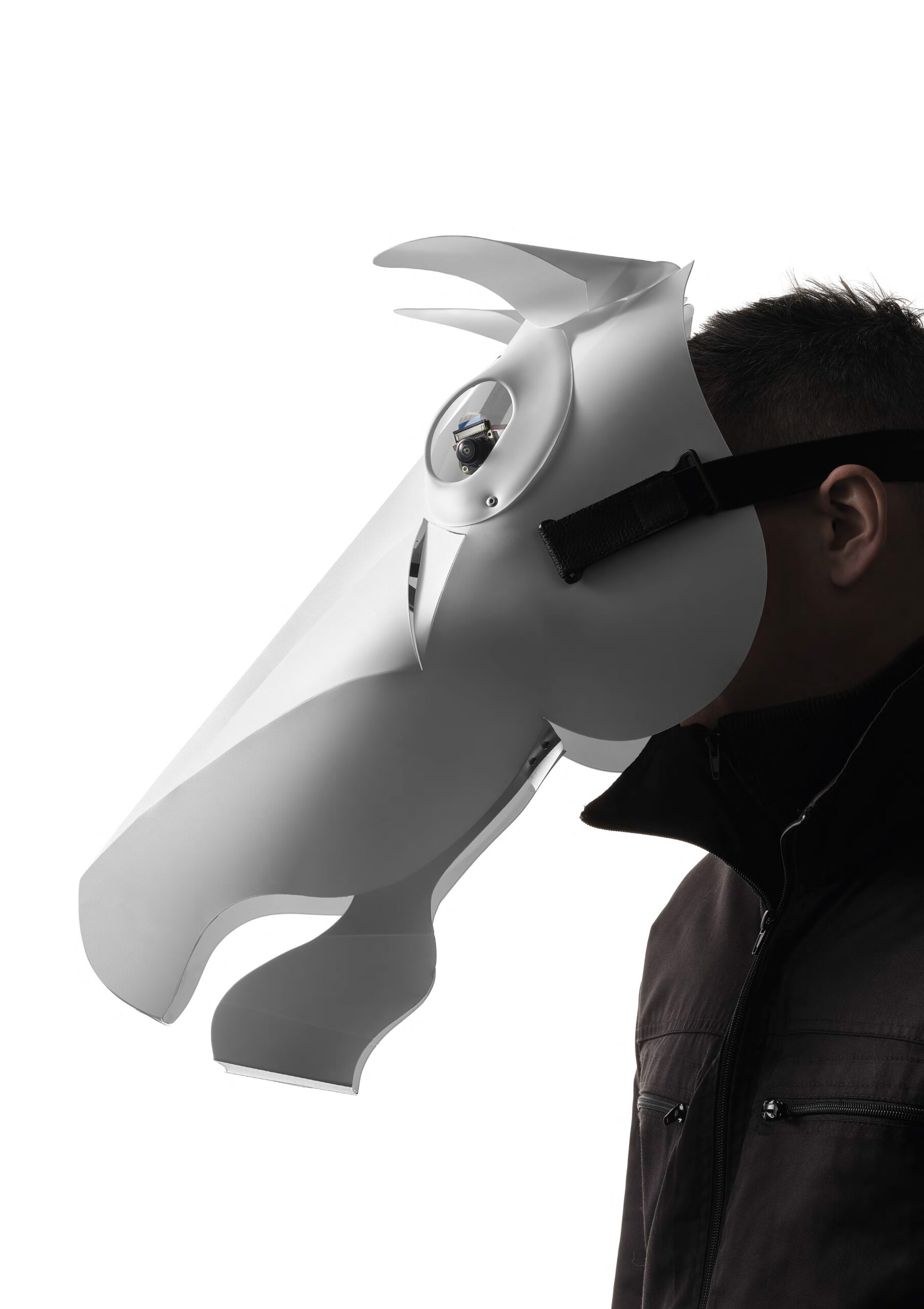
The project is an exploration of how designing and making can foster new forms of kinship and generate alternative types of knowledge. The project seeks to reframe our understanding of horses, challenging the ways in which we perceive, engage with, and construct our relationships with non-human others. It explores how we could use Speculative Design to imagine them otherwise. Through this speculative design experiment, Equine Eyes prompts an embodied and situated inquiry into interspecies interactions, offering an immersive and reflective space for audiences to reconsider how we come to know and relate to other beings. The project was originally built as a Speculative Design intervention in the field of Animal Computer Interaction.
Equine Eyes functions as a piece of Academic Carpentry to craft an experience that foster a more attentive relationship with non-human animals. While explicitly focusing on horses, the project extends beyond this single species, aiming to cultivate broader, more inclusive ways of being in and with the world. The project applies RtD to shape a new kind of knowledge that is positioned, embodied, and deeply entangled with lived experiences, resisting the abstraction and detachment often associated with traditional academic inquiry.
Through the application of Object-Oriented Ontology (OOO) to the design and making process, Equine Eyes seeks to construct experiences that nudge towards the ontological flatness advocated by OOO. This philosophy challenges the hierarchical structures that place human perception and cognition at the centre of knowledge production, instead proposing all objects—human and non-human, animate and inanimate—exist on equal footing. In this context, the project does not merely depict or represent the horse; rather, it asks what it might mean to craft philosophy, to build an artefact that troubles and complicates the ways we think about, engage with, and relate to non-human others.
A central question underpinning the project is: how do we discipline and situate knowledge? The project critically examines the epistemological frameworks that shape our understanding of the world, particularly those that govern our relationships with other species. Traditional knowledge systems tend to be hierarchical, privileging certain ways of knowing—particularly those rooted in scientific objectivity, empirical observation, and positivist reasoning—while marginalizing other forms of knowledge, such as embodied, intuitive, or experiential ways of knowing. Equine Eyes seeks to resist these dominant structures, advocating instead for an epistemology that is pluralistic, provisional, and positioned—one that acknowledges the legitimacy of multiple ways of knowing and actively resists the impulse to fix knowledge into rigid, universal categories.
Drawing from Feminist Design Methods, the project engages with practices that challenge established power structures within knowledge production. Feminist design foregrounds the situated, subjective, and relational nature of knowledge, rejecting the notion of a singular, authoritative perspective in favour of an approach that values multiplicity, complexity, and intersectionality. Equine Eyes applies these principles by crafting an experience that is intentionally open-ended, playful, and participatory. It invites users to engage with speculative scenarios that do not dictate a singular interpretation but instead encourage exploration, questioning, and meaning-making. The projects positioning statement which forms part of the portfolio situates the making process in the personal and reflective journey helping to illuminate the potential bias’ – both intentional and unintentional which have/could/may have shaped the iterative cycles of making.
Throughout the prototyping process – spanning 9 years – the iterative cycles of thinking, making and reflecting have been documented in a reflective diary, first online and then catalogued into a print artefact. Samples of the reflective process are available below, and the full diary is available here.
The project is particularly concerned with the role of play in Speculative Design. Play, as a mode of engagement, offers a unique space for exploring alternative ontologies and disrupting entrenched assumptions about the world. It enables experimentation with different ways of thinking, knowing, and being—without the constraints of rigid disciplinary boundaries. It creates an opportunity for audiences to practice thinking-with, becoming-with, and knowing-with non-human others.
In resisting positivist, rationalist modes of knowledge production, Equine Eyes embraces an ethos of entanglement and relationality. It acknowledges that our knowledge of other species is never neutral or objective but is always shaped by the cultural, historical, and disciplinary contexts in which it emerges. By foregrounding this entanglement, the project challenges the assumption that humans can stand apart from or above the non-human world, instead emphasizing the ways in which we are always already enmeshed within complex ecological and ontological networks. By advocating for a more expansive, inclusive, and ethically engaged approach to interspecies relationships, it aligns itself with broader movements in post-humanist thought and multispecies studies that seek to dismantle anthropocentric biases and explore alternative ways of coexisting with the more-than-human world.
By positioning itself at the intersection of design, philosophy, and multispecies studies, Equine Eyes offers a way to understand the role of design can have in shaping not only the material world but also the conceptual landscapes that we use to imagine and understand the world. It demonstrates how speculative design can function as a mode of knowledge-making, world-building, and epistemological critique—a way of troubling disciplinary boundaries and opening up new spaces for inquiry, imagination, and ethical engagement.
Equine Eyes is an invitation: an invitation to play, to speculate, to question. It is an experiment in ontological and epistemological plurality, a crafted intervention that resists closure and embraces the greedy, generative, and entangled nature of knowledge. By engaging with the ambiguous spaces opened by play, it encourages us to imagine new ways of being-with the world—ways that are more attentive, more inclusive, and more expansive in their ethical and ontological scope.
As a speculative design project, Equine Eyes does not seek to provide definitive conclusions or prescriptive answers. Instead, it gestures towards alternative futures, radical possibilities, and new modes of relationality. It asks us to consider: What if we could think horses differently? What if design could help us cultivate new forms of kinship, new types of knowledge, new ways of being-with the world?
The project has been presented internationally at a number of national and international conferences, symposium and events:
Press Coverage – Horsetalk (2021) Do you see what I see? Seeing the world through the eyes of a horse https://www.horsetalk.co.nz/2021/05/01/seeing-world-eyes-horse/
Hook, A. (2019) “Exploring Speculative Methods: Building Artifacts to Investigate Interspecies Intersubjective Subjectivity.” Alphaville: Journal of Film and Screen Media, no. 17, pp. 146–164. DOI: https://doi.org/10.33178/alpha.17.09.
Hook, A. (2019) Speculative Methods for Interspecies Design, Imagine! Belfast Festival, Futureproof: Real Research in a Virtual World, Ulster University (UK) https://imaginebelfast.com/events/futureproof-real-research-in-the-virtual-world/
Hook, A. (2019) The Politics of Interspecies Design, Technology, Culture and Politics Workshop, Ulster University (UK)
Hook, A. (2018) Designing Empathy: Understanding Nonhuman Animals Falmouth University https://www.eventbrite.co.uk/e/alan-hook-presents-designing-empathy-understanding-non-human-animals-tickets-52810377260
Hook A. (2018) Speculations on the Human and Non-Human Animal Through Play Playful Encounters (CHN) https://www.nottingham.edu.cn/en/internationalcommunications/playful-encounters.aspx
Hook, A. (2018) Exploring the Borders Between Human and Non-Human Animals. TEDxBallybofey (IE) https://www.youtube.com/watch?v=qMnUKrArrlo
Hook, A. (2018) Speculations on the Human and Non-Human Animal. Film and Screen Media Creative Practice Symposium (IE) https://www.ucc.ie/en/media/academic/filmstudies/files201718/CreativePracticeSymposiumMay2018.pdf
Stadon, J. & Hook, A. (2017) Oblique Strategies for Mixed Reality Art, VSMM2017 International Society on Virtual Systems and MultiMedia http://vsmm.org/workshops/
Hook, A. (2017) Inter-Species Play as Speculative Design, If You Weren’t: Playing with Realities in ARG, AR, and VR, Stanford University (US) http://www.ifyouwerent.org/

